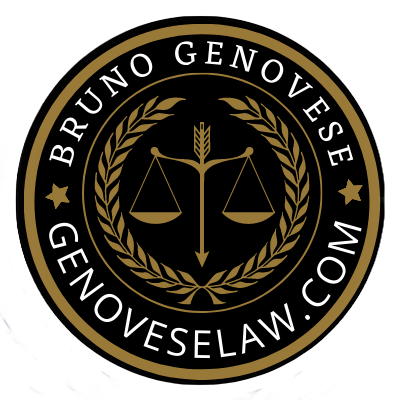Introduction
Leaseback ownership is like buying a fine French cheese – it sounds delicious, luxurious, and downright sophisticated. But unlike cheese, which can be glorious even as it ages, a leaseback investment can start to turn sour over time. Rising fees, rental income that’s as inconsistent as Parisian sunshine, and management practices that leave much to be desired can all chip away at the appeal of your once-promising investment.
If you’re feeling like your leaseback property is more of a burden than a benefit, don’t despair! With the right steps, you can refresh your arrangement and give it the joie de vivre it once had. Here’s how to rejuvenate your leaseback property, negotiate better terms, and find a fresh deal that works for you.
1. Check the Expiration Date – Is Your Leaseback Aging Poorly?
Just like a wheel of Brie that’s been left out too long, some leaseback contracts can lose their appeal over time. While these agreements are often designed to last a decade or more, market conditions, property management changes, and evolving fees can leave you with a deal that feels less than fresh.
How to Tell If It’s Time for a Refresh
Start by reviewing your contract terms. Are the rental income guarantees still holding up? Are your charges de copropriété (maintenance fees) rising faster than you can say “Camembert”? If the numbers no longer make sense or if the income isn’t what you originally signed up for, it’s a sign that your leaseback might be overdue for a check-up.
Take a look at how similar properties in your area are performing. If you’re seeing better deals or more favorable terms on newer leasebacks, you may be in a position to renegotiate or look for a buyout option. After all, why settle for a stinky deal when you could get something a little fresher?
2. Renegotiating Terms – Spruce Up That Stale Contract
If your leaseback agreement is starting to feel as stiff as a block of aging Comté, a little renegotiation might be in order. Many leaseback contracts allow for term adjustments, especially if your property manager wants to keep you on board as a happy owner.
Where to Start with Renegotiation
First, take stock of what you’d like to change. Are the maintenance fees higher than you expected? Is the rental income guarantee due for a boost? Start by identifying the specific points you’d like to discuss, and prepare to make your case.
Reach out to your property manager with your requests, keeping the tone friendly but firm. Explain why these adjustments would help keep your investment profitable (and keep you around as a loyal owner). Property managers are often open to negotiating if they sense it will lead to a long-term, mutually beneficial arrangement. With a little finesse, you might just be able to shave down some fees, get a bit more rental income, or at least secure a cap on future increases.
Bring In Backup if Needed
If your manager isn’t keen on negotiating, consider hiring a French real estate lawyer to lend a little weight to your requests. They can review your contract, help you understand what’s possible, and even handle the negotiations if needed. Think of it as bringing in a maître d’ to make sure your “meal” – or lease – is as enjoyable as possible. A bit of legal know-how can go a long way toward getting a fresh deal.
3. Explore a Buyout – Give Yourself a Clean Slate
Sometimes, a leaseback arrangement has aged so much that it’s no longer salvageable. If that’s the case, a buyout might be your best option for a clean break. While this usually involves a one-time fee to dissolve the lease and reclaim full ownership, for many owners, the freedom to make their own decisions is well worth it.
Understanding Buyout Costs
The cost of a buyout can vary, depending on the remaining term, projected rental income, and any penalties baked into your contract. Start by asking your property manager for a quote, and don’t be afraid to negotiate – after all, they might prefer a one-time payment over ongoing management responsibilities.
Consider the financial trade-offs: will a buyout save you from years of high fees, fluctuating income, or restrictive terms? If the answer is yes, the buyout could be a wise investment in your peace of mind. And remember, once you’re free of the leaseback agreement, you’ll have the flexibility to rent, sell, or simply enjoy the property at your leisure – no strings attached.
Timing Your Buyout
If a buyout is on the table, timing can play a big role. Try to initiate discussions when the property manager has fewer vacancies, as they may be more inclined to agree if they’re in a stable position. And if they’re actively managing other properties in the area, they might be happy to reduce their responsibilities – especially if the buyout helps them streamline their operations.
4. Selling Your Leaseback Property – A Fresh Start with New Ownership
If renegotiating or buying out doesn’t make sense, consider selling the property with the lease still intact. This allows you to pass on the lease obligations to a new owner, freeing you from the financial and administrative burdens while allowing someone else to benefit from the income and perks of leaseback ownership.
How to Attract the Right Buyer
When selling a leaseback, transparency is key. Provide potential buyers with up-to-date financial records, rental income statements, and an outline of any future obligations. Buyers want to know exactly what they’re getting into, especially when it comes to a leaseback property.
Work with a real estate agent familiar with the leaseback market, as they’ll know how to present the property’s unique benefits, like hands-off management and potential tax advantages. Set a realistic price – remember, leaseback properties may not fetch the same premium as traditional real estate, but the right pricing will attract serious investors.
Navigating the Market
Keep an eye on local market trends and tourism forecasts, as these can affect demand for leaseback properties. If your property is in a high-traffic area, like a popular vacation spot, you may find buyers who are eager to jump into the French tourism market. With a bit of patience and the right marketing, you can find the perfect buyer to take over your leaseback and give yourself a fresh start.
5. Getting Legal Advice – Don’t Go It Alone
Navigating a leaseback refresh on your own can feel like tackling a French recipe with half the ingredients. To make sure you’re fully covered, consider consulting a French real estate attorney. They can review your contract, advise on your options, and guide you through the steps of renegotiating, buying out, or selling the property.
Why a Lawyer Can Make a Difference
Leaseback contracts are often dense, filled with fine print that can be easy to overlook. An experienced lawyer will help you understand your rights, identify areas for negotiation, and even spot hidden fees that may be worth challenging. Think of them as your leaseback sommelier, ready to recommend the best “pairing” for your unique situation.
Working with a lawyer may seem like an added expense, but in the long run, it’s an investment in getting a fresh deal that truly works for you. And who knows? With a little legal support, you might just find that your leaseback woes are far easier to solve than you’d anticipated.
Conclusion: It’s Time to Get a Fresh Deal
Leaseback ownership may come with its share of challenges, but with a few strategic moves, you can turn things around. Whether you decide to renegotiate, explore a buyout, sell, or seek legal support, there’s always a way to refresh your investment and enjoy a smoother ownership experience.
So don’t let your leaseback arrangement age into something you barely recognize – treat it like a well-curated cheese board and keep things fresh! With the right approach, you can reclaim the joy of ownership, cut back on the hassles, and ensure that your leaseback is a part of your portfolio that you can actually savor. Here’s to fresh starts and smart choices – bon courage!





